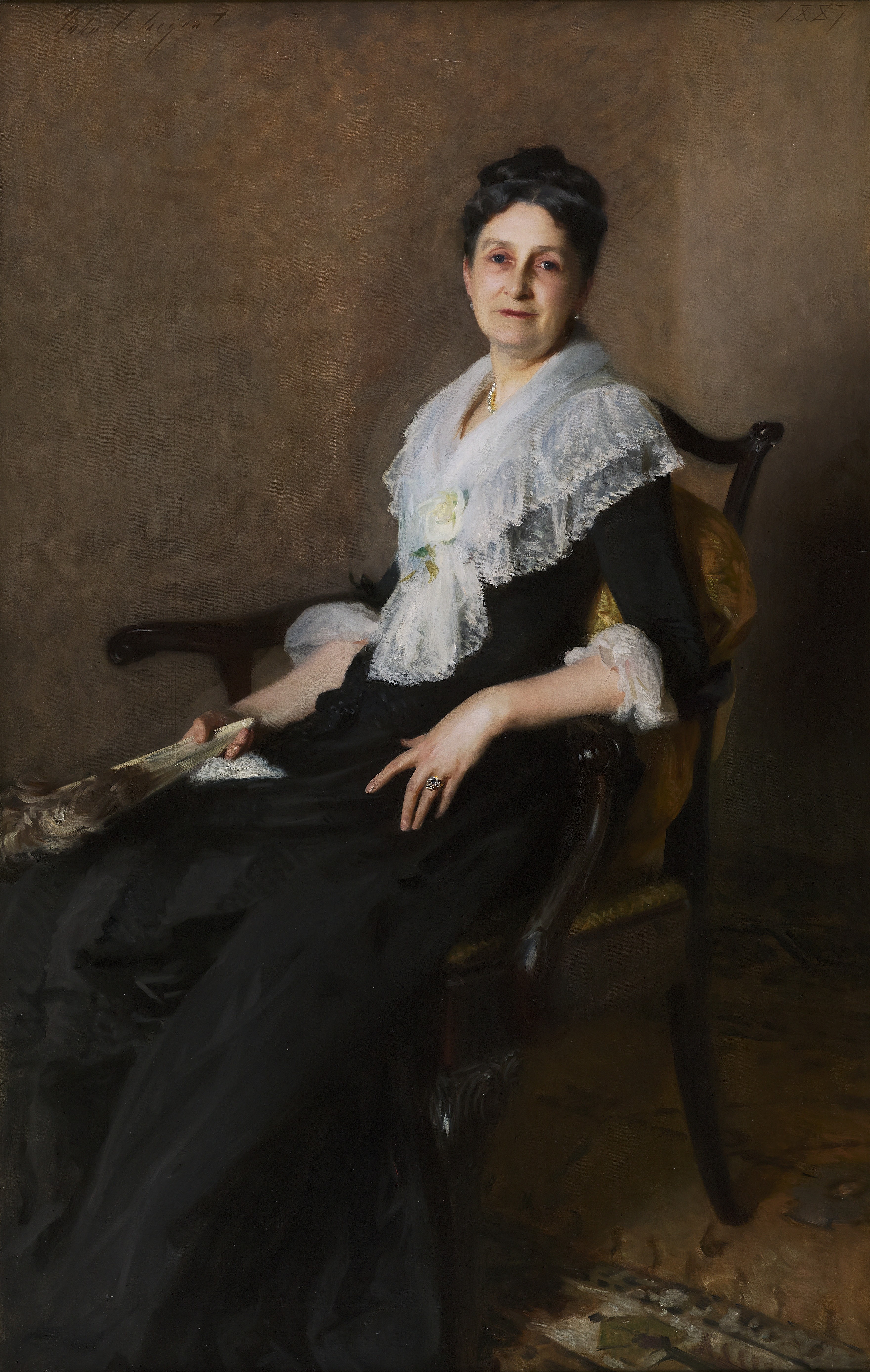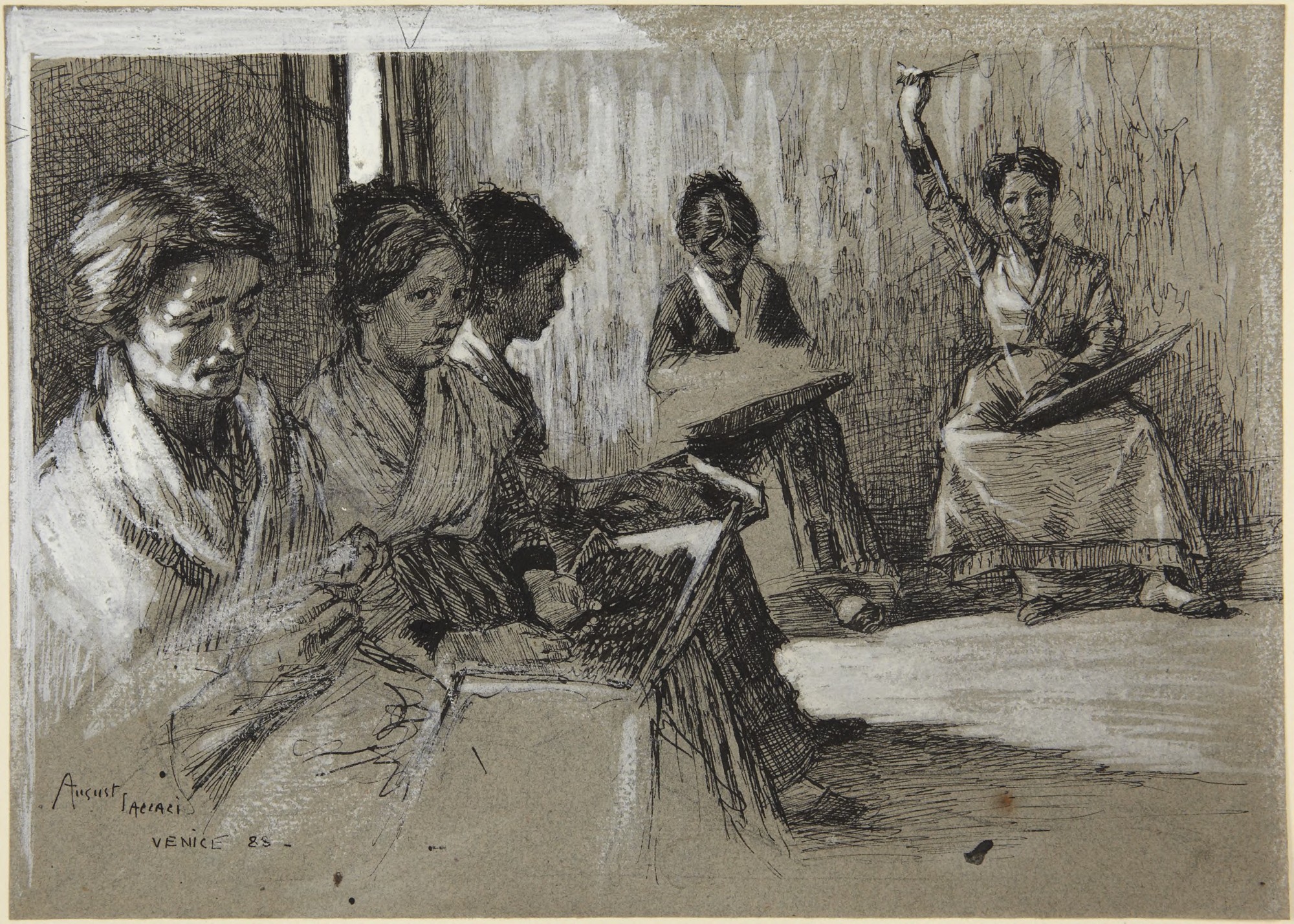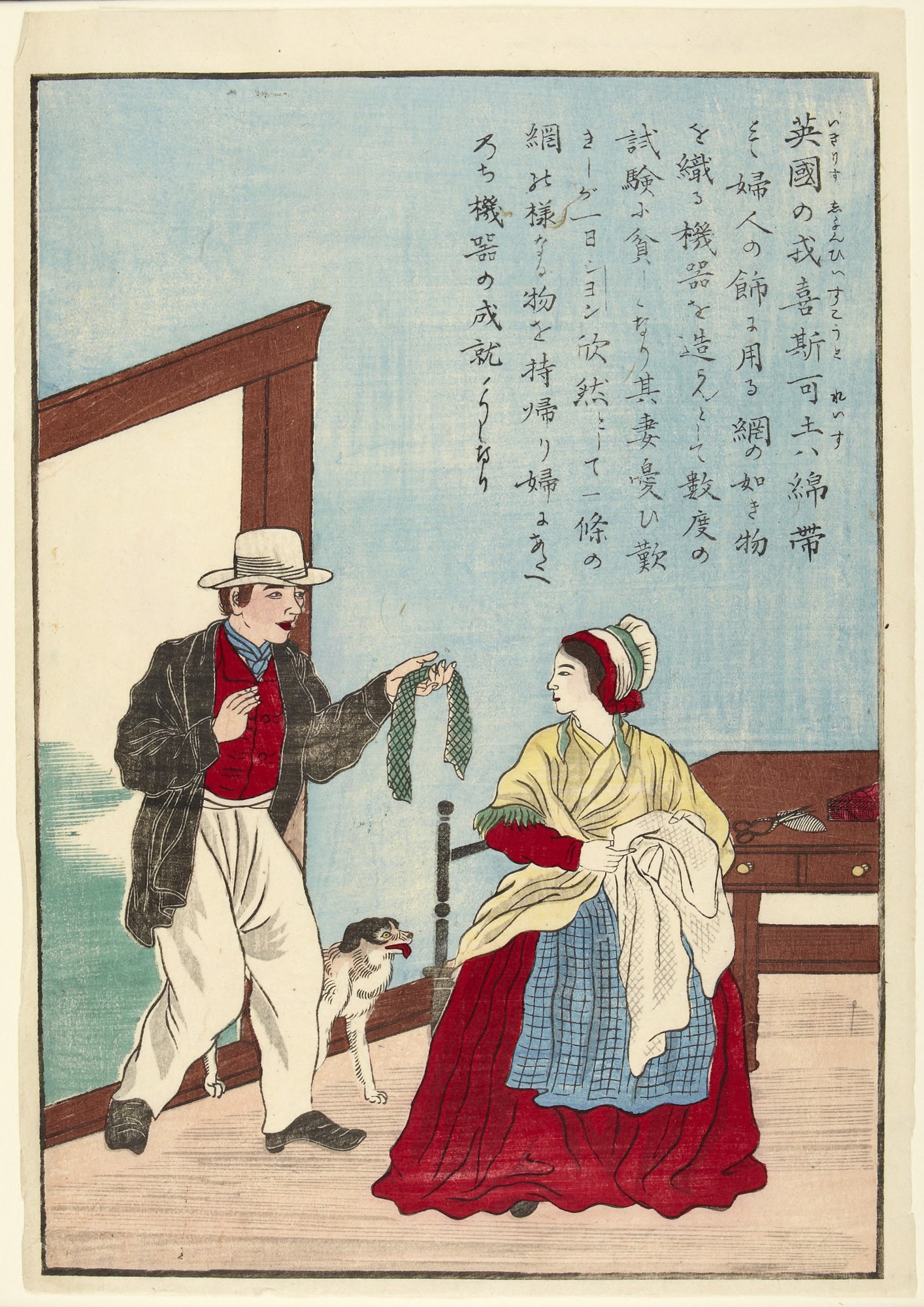
In modern times, hand-made lace remained both a product of luxury and a sign of restraint and modesty. These last qualities were expressed by the material itself, threads of linen or cotton, and by the color, white, a symbol of purity. Members of the New England upper class, like Elizabeth Allen Marquand, wife of one of the founders of The Metropolitan Museum of Art and mother of its first director, aimed to present themselves as the moral descendants of the Puritan settlers. But hand-made lace was also a luxury item: the labor and skill that went into its creation transformed the cheap raw material into one of the most expensive items of a lady’s wardrobe.
Elizabeth Allen Marquand, 1887
Oil on canvas, 169 x 107 cm.
From Princeton University Museum of Art, Gift of Mrs. Eleanor Marquand Delanoy, granddaughter of the sitter. y1977-77.


